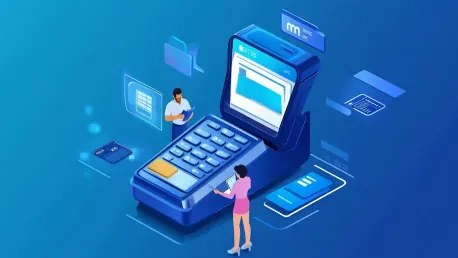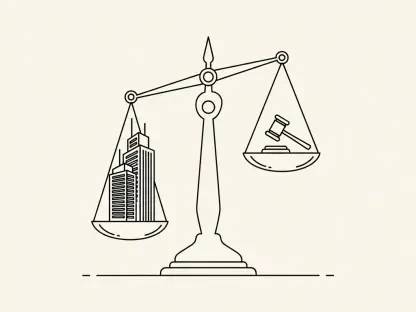As the payment services market continues to evolve, two paradigms are making headlines: Open Banking and A2A Request to Pay. These technologies promise to revolutionize how consumers and businesses handle financial transactions. By offering enhanced functionalities and addressing various market inefficiencies, both Open Banking and A2A Request to Pay have the potential to reshape the financial services landscape. But which one is truly leading the way?
Innovation Stagnation and the Need for Change
The payments market has seen few significant changes since the advent of tokenization and digital wallets, which offered increased security and convenience. This stagnation has been especially noticeable despite the rapid advancements in other sectors like e-commerce, health tech, and logistics. While tokenization and digital wallets have made incremental improvements to transaction security, the core systems remained largely unchanged. Consumers and businesses alike have been left yearning for more dynamic solutions that better fit into today’s digital-first, fast-paced world. This is where Open Banking and A2A Request to Pay enter the scene, both aiming to fill this innovation gap with different approaches and methodologies.
Open Banking: A New Financial Ecosystem
Understanding Open Banking
Open Banking is an open financial ecosystem that allows secure data exchange between banks and other market players. Its primary goal is to foster competition, enhance service quality, and ensure greater financial transparency. By leveraging APIs (Application Programming Interfaces), Open Banking enables third-party providers to access consumer banking data (with the consumer’s consent) and offer tailored financial services. This ecosystem is transforming traditional banking systems, which were often siloed and reluctant to share critical data. The enhanced transparency and competition introduced by Open Banking aim to put consumers in a position of greater financial control and offer them a broad array of innovative financial services.
Open Banking’s capabilities extend beyond personal finance management to include small business and corporate applications. For example, small business owners can use Open Banking to streamline cash flow forecasting, integrate accounting with banking seamlessly, and perform real-time financial analysis. The benefits are not limited to new entrants and fintechs; traditional banks themselves can embrace Open Banking to offer value-added services, thereby retaining customer loyalty while staying competitive in an increasingly crowded market. This shift towards an open financial ecosystem aligns well with the larger trend of digital transformation sweeping across various sectors.
PSD2 Directive: The Framework of Open Banking
The PSD2 (Payment Services Directive 2), which took effect in 2018, sets the legal groundwork for Open Banking by enabling third-party access to bank systems via APIs. These APIs allow secure access to financial data and the initiation of transactions, putting customers in control of their financial information and empowering new market entrants to innovate. Notably, the PSD2 directive mandates that banks must allow access to this data when requested by authorized third-party providers (TPPs), broadening the scope for innovation within the financial services industry.
At the core of PSD2’s significance is its focus on consumer protection and financial stability. The directive introduces strong customer authentication (SCA) protocols to ensure that data access and transactions are secure. SCA requires multi-factor authentication, making it harder for unauthorized parties to access consumer financial data or initiate fraudulent transactions. Furthermore, PSD2’s mandate for accountability and transparency within the ecosystem helps build consumer trust, which is essential for the widespread adoption of Open Banking services. This regulatory framework not only fosters a competitive market but also ensures that innovation does not come at the cost of consumer security.
Types of Providers in Open Banking
Open Banking involves different types of service providers, each offering unique functionalities that contribute to the ecosystem’s versatility. Payment Initiation Service Providers (PISPs) can access clients’ bank account information to initiate transactions on their behalf. This capability allows PISPs to create seamless payment experiences, reducing the need for users to switch between multiple platforms to complete a transaction. It also reduces transaction costs, as direct account-to-account payments typically have lower fees compared to traditional card payments.
On the other hand, Account Information Service Providers (AISPs) focus on aggregating and analyzing financial data but do not have the ability to initiate transactions. AISPs excel at offering consumers a consolidated view of their financial health by pulling data from multiple banking accounts into a single interface. This is particularly useful for users managing accounts across different banks, providing them with real-time updates and sophisticated analytics to make informed financial decisions. The comprehensive data aggregation offered by AISPs can also help small businesses with accounting and budgeting, enhancing operational efficiency and financial planning.
A2A Request to Pay: Simplifying Payments
The Concept and Mechanism
A2A Request to Pay is an older, yet simpler service that allows billing through mobile banking applications for invoice payments. This method uses pre-filled payment instructions requiring only user confirmation, making it a convenient option for both businesses and consumers. Unlike Open Banking, which aims to revolutionize the entire financial ecosystem, A2A Request to Pay focuses on simplifying specific types of transactions, particularly those involving regular invoice payments. This focus makes A2A Request to Pay a straightforward solution for immediate needs without requiring extensive system overhauls.
The simplicity of A2A Request to Pay makes it particularly attractive to small and medium-sized businesses that may not have the resources to implement more complex solutions. Businesses can send invoices to customers, who then receive pre-filled payment instructions via their mobile banking app. All the user has to do is confirm the payment, significantly reducing the administrative burden of managing invoice payments. This ease of use translates to faster payment cycles for businesses and a frictionless experience for consumers, providing an immediate solution to enhance transaction efficiency.
QR NBU in Ukraine
In Ukraine, A2A Request to Pay is often referred to as QR NBU by the National Bank of Ukraine. This service relies heavily on mobile banking applications to facilitate seamless invoice payments. QR codes are employed to pre-fill payment details, requiring only a quick scan and user confirmation to complete the transaction. While this service has gained traction, its adoption is limited by user experience challenges and voluntary participation by banks. Currently, only 12 banks in Ukraine support the A2A Request to Pay service, covering nearly 80% of retail bank customers. This limited adoption hampers the wider utilization of the service, despite its feasibility and straightforward implementation.
The QR NBU service exemplifies how localized initiatives can address specific market needs but also highlights the challenges of achieving widespread adoption without a unified regulatory or incentive framework. The National Bank of Ukraine has recognized these challenges and is working towards improving the service’s utility. One of the key steps in this direction is the upcoming online operation of the System of Electronic Payments (SEP) by 2025. This upgrade aims to reduce transaction times, making A2A Request to Pay faster and more reliable, thereby encouraging broader adoption among banks and consumers.
Current Adoption and Future Enhancements
As mentioned, only 12 banks in Ukraine currently support the A2A Request to Pay service, covering nearly 80% of retail bank customers. However, the expected enhancements like the impending online operation of the National Bank of Ukraine’s System of Electronic Payments (SEP) by 2025 promise to increase the utility and attractiveness of A2A services. Faster transfer times enabled by SEP would make A2A Request to Pay a more viable option for real-time transactions, addressing one of the critical gaps currently limiting its adoption.
Moreover, improving user experience will be crucial for the broader acceptance of A2A Request to Pay. Streamlining the user interface and making the confirmation process more intuitive can significantly reduce friction, thereby encouraging more consumers and businesses to adopt this service. As the SEP upgrade takes effect and user experiences improve, the National Bank of Ukraine anticipates a surge in the adoption rate. This increase will not only benefit consumers by offering a convenient payment method but also help businesses manage their receivables more efficiently, thus enhancing overall market liquidity.
Comparative Analysis
Open Banking’s Revolutionary Potential
Open Banking offers transformative advantages such as enhanced account management, multi-account control from a single application, and real-time transactions between accounts. These features significantly enhance consumer convenience and provide valuable insights into financial behaviors through sophisticated analytics. The ability to manage multiple accounts from a single interface aligns well with the modern consumer’s expectation for streamlined, user-friendly financial services. By mandating adoption across all banks, Open Banking is poised to drastically alter the financial landscape and drive a wave of innovation across the sector.
Moreover, Open Banking facilitates a level of financial integration that was previously unattainable. Its API-based framework allows fintech companies to offer innovative products that make financial management, investment, and even loan procurement more accessible and efficient. This seamless integration fosters a collaborative environment where traditional banks and fintech companies can co-exist, each contributing their strengths to offer a superior service to the end-user. Open Banking thus stands as a beacon of transformative potential in the ever-evolving financial landscape.
A2A’s Immediate Benefits and Limitations
A2A Request to Pay provides immediate convenience and simpler technical deployment. By requiring only a user confirmation to process payments, A2A Request to Pay eliminates several steps that typically complicate financial transactions. Despite these advantages, its user experience is less sophisticated, lacking the advanced features and comprehensive financial management capabilities offered by Open Banking. Adoption remains incomplete, making it an effective interim solution but one that may struggle to compete with the comprehensive offerings of Open Banking in the long term.
While A2A Request to Pay addresses immediate needs, its limitations in scope and user experience are apparent. The lack of mandatory adoption across all banks means that its reach and utility are restricted, especially for consumers and businesses operating with multiple financial institutions. Moreover, the current user experience challenges could hinder its long-term adoption. Without significant upgrades and broader regulatory support, A2A Request to Pay may remain a niche solution, valued primarily for its simplicity and immediate utility rather than as a cornerstone of future financial services strategies.
Regulatory Impact and Market Trends
The Role of Regulations
Regulatory frameworks like the PSD2 directive play a crucial role in driving the adoption of Open Banking. These mandatory regulations ensure a broad and uniform implementation across the market, catalyzing industry-wide transformations. PSD2’s focus on consumer protection and strong customer authentication (SCA) protocols enhances trust within the Open Banking ecosystem, which is essential for its widespread adoption. By enforcing standardized security measures and data sharing protocols, regulatory bodies ensure that Open Banking innovations do not compromise consumer safety.
Moreover, the PSD2 directive stimulates competition by lowering barriers to entry for new fintech startups. Traditional banks, while initially resistant, have had to adapt to this new regulatory environment or risk obsolescence. In turn, this has led to a flurry of innovation within the financial services industry as banks and fintechs vie to provide the best possible services to customers. The regulatory impact, therefore, extends beyond simple compliance, fostering an environment ripe for innovation and customer-centric advancements in financial services.
Market Dynamics and Adaptation
The payments market is steadily adapting to these new technologies. Larger banks are leading the way in implementation, recognizing the competitive advantages offered by Open Banking and A2A Request to Pay. In the context of Open Banking, these banks are integrating APIs to facilitate seamless transactions and data sharing, thereby enhancing their service offerings and customer engagement. However, smaller banks must follow to remain competitive, often deploying Open Banking solutions more rapidly due to fewer bureaucratic hurdles and more agile operation structures.
The ongoing evolution of the payments market suggests a trend towards more efficient, user-friendly, and transparent financial services. As more banks and financial institutions adopt Open Banking and A2A Request to Pay, the market is likely to see a convergence towards platforms that offer integrated services with superior user experiences. The adaptation is not just driven by regulatory mandates but also by the growing consumer demand for better, faster, and more secure financial transactions. This dual pressure from both regulatory bodies and market forces is accelerating the adoption and refinement of these new technologies.
Future of Payment Innovations
Though Open Banking appears to hold greater long-term potential, A2A Request to Pay remains relevant for its immediate utility. Both frameworks are likely to coexist, each addressing different aspects of consumer and business needs within the payment services ecosystem. Open Banking, with its comprehensive array of features and mandated adoption, is set to become a cornerstone of future financial services. It enables complex, multi-faceted financial products and services that can adapt to the dynamic needs of modern users, whether they are individuals or businesses.
However, A2A Request to Pay’s simplicity and immediate applicability ensure that it will continue to have a place in the market. Its lower technological and regulatory barriers make it an attractive option for quick deployment, particularly in markets or segments where fully-fledged Open Banking solutions may be overkill. As both technologies evolve, they are likely to complement each other, offering a spectrum of solutions tailored to immediate, near-term, and long-term financial needs. This blend of innovative solutions promises a future where payment services are not only efficient and secure but also highly adaptable to varied consumer and business requirements.
By embracing these advancements, the financial services industry can look forward to a more competitive, efficient, and user-centric future. The ongoing adaptation and regulatory support will be key in shaping the next wave of payment innovations. The future landscape of financial transactions is poised for a radical transformation, driven by the convergence of security, efficiency, and user experience in both Open Banking and A2A Request to Pay frameworks.
Conclusion
As the payment services market rapidly evolves, two notable paradigms are drawing considerable attention: Open Banking and Account-to-Account (A2A) Request to Pay. Both technologies herald a significant transformation in financial transactions for both consumers and businesses. Open Banking unlocks new functionalities by allowing third-party providers to access financial data securely with user consent, streamlining services like budgeting, faster loans, and personalized financial products. On the other hand, A2A Request to Pay provides an efficient way for businesses to request funds directly from a payer’s bank account, bypassing traditional credit and debit card systems. This can reduce transaction costs and lead to faster settlements. Both approaches address various inefficiencies in the current market landscape and offer promising improvements. However, the question remains: which of these technologies is leading the charge in reshaping the financial landscape? While both have their merits, the answer may depend on specific use cases and how the industry adopts and integrates these advancements.









